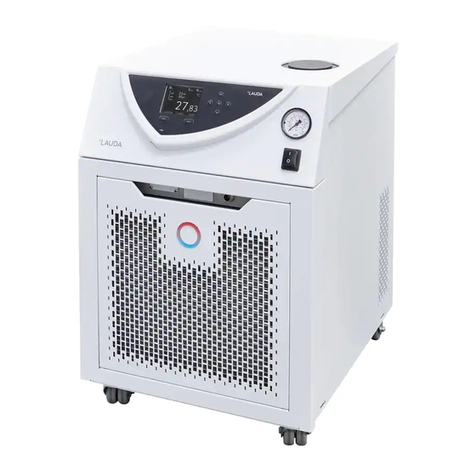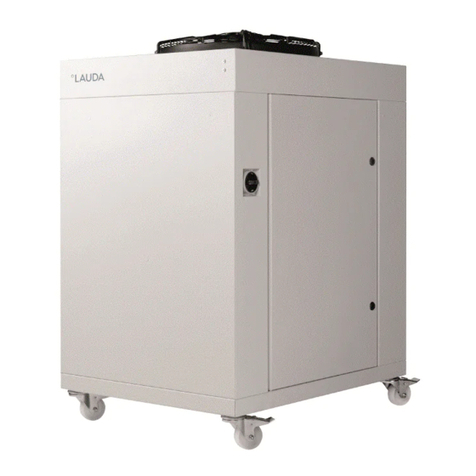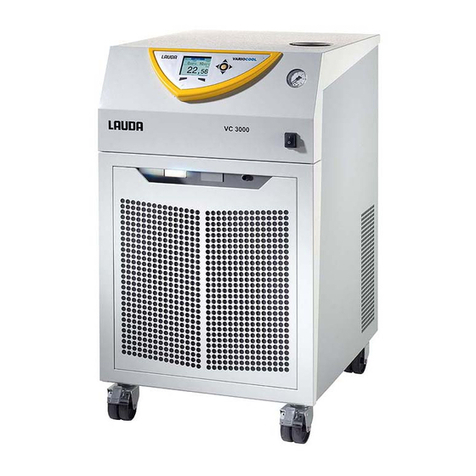
5.1 LAUDA heat transfer liquids..................................................................................................................................... 29
5.2 Establishing power supply.......................................................................................................................................... 30
5.3 Switching on the device and filling with heat transfer liquid.................................................................................. 30
5.4 Setting the pump pressure......................................................................................................................................... 32
6 Operation............................................................................................................................................................................ 34
6.1 Switching on the device............................................................................................................................................. 34
6.2 Default display and menu items................................................................................................................................ 34
6.3 Screen displays............................................................................................................................................................ 37
6.4 Specifying the setpoint temperature........................................................................................................................ 37
6.5 Restricting temperature limit values......................................................................................................................... 38
6.6 Configuring timer........................................................................................................................................................ 39
6.7 RS 232 interface.......................................................................................................................................................... 41
6.7.1 Configuring RS 232 interface................................................................................................................ 41
6.7.2 Protocol..................................................................................................................................................... 41
6.7.3 Write commands...................................................................................................................................... 42
6.7.4 Read commands...................................................................................................................................... 43
6.7.5 Error messages......................................................................................................................................... 43
6.8 Configuring alarm output.......................................................................................................................................... 44
6.9 Inputting oset of the temperature sensor............................................................................................................. 44
6.10 Restoring the factory settings................................................................................................................................... 45
7 Maintenance........................................................................................................................................................................ 46
7.1 General safety instructions........................................................................................................................................ 46
7.2 Maintenance intervals................................................................................................................................................ 46
7.3 Cleaning the device..................................................................................................................................................... 47
7.4 Cleaning air-cooled condenser................................................................................................................................. 47
7.5 Checking heat transfer liquid..................................................................................................................................... 47
8 Faults.................................................................................................................................................................................... 48
8.1 Alarms, errors and warnings...................................................................................................................................... 48
8.2 Alarms overview.......................................................................................................................................................... 49
8.3 Warnings overview...................................................................................................................................................... 49
9 Decommissioning................................................................................................................................................................ 50
9.1 Draining the device..................................................................................................................................................... 50
10 Disposal................................................................................................................................................................................. 51
10.1 Disposing of refrigerant............................................................................................................................................... 51
10.2 Device disposal............................................................................................................................................................. 51
10.3 Disposing of packaging................................................................................................................................................ 51
11 Technical Data..................................................................................................................................................................... 52
11.1 General data................................................................................................................................................................ 52
11.2 Cooling unit................................................................................................................................................................. 53
V05REV08
Microcool4 / 57


































